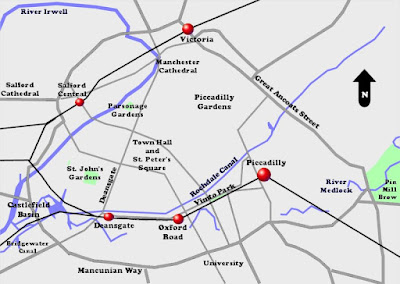 |
| Common scoter, Marshside |
I was havering between going out for a walk round Marshside or going to Martin Mere. So I decided I'd go over to Southport and drop off at New Lane on the way home for a quick dekko round Martin Mere. The weather looked dodgy but manageable.
 |
| Marshside in the rain |
I got off the 44 bus on Marshside Road and walked down just as the heavens opened and it kept on pouring down for the next couple of hours.
There were hundreds of wigeon and black-tailed godwits on the marsh. There were rather a lot fewer teal and lapwings, and still quite a few pintails on Junction Pool. A red-legged partridge ran along the drain by the road and scuttled for the cover in a bramble patch.
 |
| Common scoter, Marshside First sighting, fast asleep and not looking promising |
 |
| Common scoter bathtime, Marshside Showing off the long, pointed tail that's usually held flat on the water |
 |
| Common scoter bathtime, Marshside |
 |
| Common scoter bathtime, Marshside |
The pool by Sandgrounders had a few dozen tufted ducks and Canada geese loafing on the wader. A large, black lump on its own on the island turned out to be a male common scoter. I cursed a bit, it was easily the closest view I've had of a drake but it was fast asleep with its head tucked in its back feathers.
I took shelter in the hide, which I had to myself for quarter of an hour. I found a few gadwall and shovelers amongst the teal and wigeon around the pool and my first couple of avocets of the year.
The scoter slipped off the island and spent a few minutes bathing in the rain.
 |
| Avocets, Marshside |
 |
| Common scoter and Canada geese, Marshside |
The weather was set foul and there was no prospect of it's getting any better so I decided to call it a day. As I left the hide it occurred to me that I couldn't get any wetter so I set off down the Marine Drive to Crossens.
Pink-footed geese were notable by their absence. In fact, the only geese at all on Marshside were Canada geese. On Crossens Outer Marsh there were just a few small family groups of pink-feet with hundreds of wigeon and black-tailed godwits.
 |
| Crossens Outer Marsh in the rain |
There were hundreds of wigeons and godwits on Crossens Inner Marsh, lapwings were thin on the ground and golden plovers even thinner. A few redshanks skittered around and I found a few ruff and snipe.
Approaching the wildfowlers' pull-in there were a lot more wigeon, teal and godwits on the outer marsh by the road. Shelducks, mostly in pairs, were dotted about further out on the marsh with a few little egrets. A few hundred pink-footed geese flew in from the estuary, whirled around and disappeared immediately into the murk and long grass in the distance. No sign of the snow goose that's been floating round here recently, sadly. But there were consolations.
A few snipe had flown over the road so when another flew by I didn't take a lot of notice until I realised it was smaller, flew straighter and had a relatively short bill. I only ever see jack snipe once every other year so it takes a while for the penny to drop.
A few meadow pipits, starlings and pied wagtails were feeding amongst the wigeons by the pull-in. It looked like there was more about so I spent a while closely scanning the grass, finding some linnets and reed buntings, half a dozen twites and a rather nice water pipit. It's the first time I've been able to get any decent photos of a water pipit and even the poor light and pouring rain didn't spoil them much.
 |
| Water pipit, Crossens Outer Marsh |
 |
| Water pipit, Crossens Outer Marsh |
I walked round to the bus stops at Crossens and got the 44 back into Southport. I was sodden wet and even I had enough sense to get the train straight back home. It was worth it, though, adding five species to the year list and some nice photos in the bargain.
February's been a funny month, albeit very productive despite having the best part of a week knocked out by storms. After a spurt at the beginning of the month the year list was static for the best part of three weeks before picking back up again at the end with a total of 133, which is very good going by my lights.








































